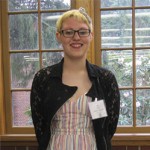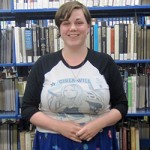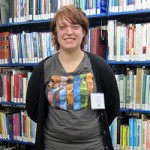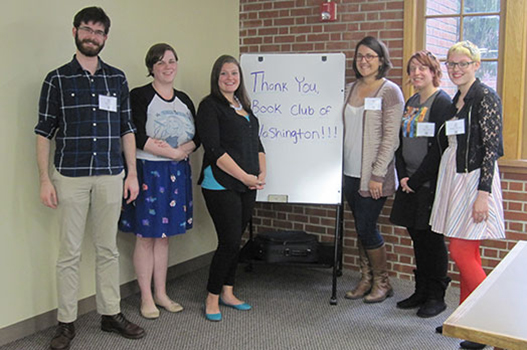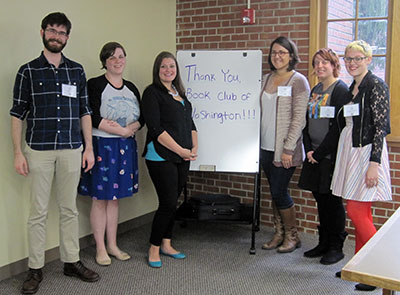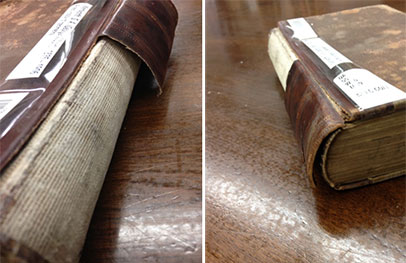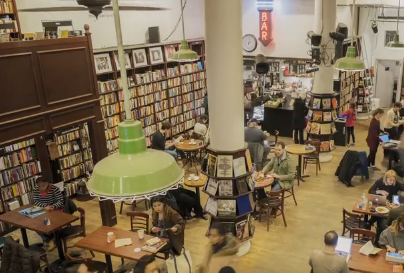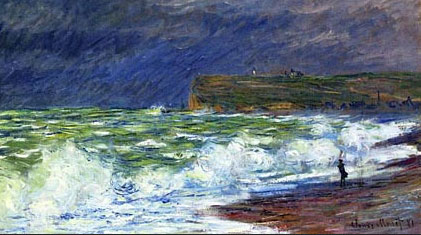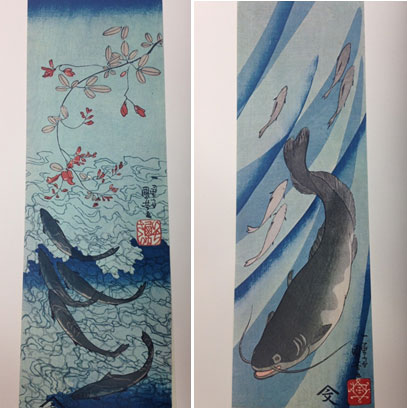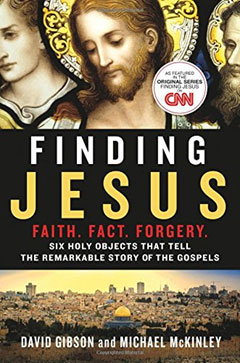-
Jessalyn Kreutzer, Best Essay Award
-
Krista Silva, Single Collector Award
-
Alicia Matz, Collins Choice Award
The winners of the 2015 Book Collecting Contest, sponsored by the Collins Library and the Book Club of Washington were announced April 23, 2015. The aim of the contest is to encourage full-time students at Puget Sound to read for enjoyment and to develop personal libraries throughout their lives, to appreciate the special qualities of printed or illustrated works, and to read, research and preserve the collected works for pleasure and scholarship. Collections can be on any subject and this contest is open to all full time students. The Book Club of Washington generously funds two cash awards for student winners – $750 to a single collector and $500 for best essay. A third award of $250, the Collins Choice Award, is sponsored by the Collins Library.
The winners are:
- Jessalyn Kreutzer (Junior), Liberation in Literature: Lesbian Ecofeminism
The award for best essay goes to Jessalyn Kreutzer for her essay, “Liberation in Literature: Lesbian Ecofeminism” Jessalyn’s essay and collection truly reflect her journey to discover herself and her place in society. She purposefully centered her essay around her definition of selfhood, while cohesively weaving her plurality of interests around that theme and welcoming and encouraging others to have the courage to take a similar journey. Congratulations to Jessalyn. - Krista Silva (Senior), The Wonderful World of Whedon: A Collection of Texts Celebrating Joss Whedon and His Works
The first place award, or single collector award, acknowledges an excellent, integrated and comprehensive essay, a well annotated bibliography, images, and wish list. This year the first place award goes to Krista Silva for her collection, “The Wonderful World of Whedon: A Collection of Texts Celebrating Joss Whedon and His Works.” Krista demonstrated a holistic, broad minded and informed approach to her collection, specifying as she did so the importance of a collection as a symbol of personal meaning. She showed how a collection is more than a group of objects, it is rather a gathering of portals of experience. Additionally, her essay exuded the depth and breadth of the Whedon universe in a variety of ways which showcased an imaginative, thorough approach to her collection. Congratulations to Krista. - Alicia Matz (Senior), Epics, Myth & Modern Magic: Where Classics & Fantasy Collide
The Collins Choice Award recognizes a student whose collection illustrates the hallmarks of a liberal arts education. This year, for our inaugural award, the Collins Choice Award goes to Alicia Matz, for her collection, “Epic, Myth, and Modern Magic: Where Classics and Fantasy Collide.” Alicia’s collection immediately stood out as a truly interdisciplinary demonstration of learning. Her collection reveals a broad integration of different disciplines woven together to form a whole. Grounded in her understanding of classics, her collection ventured into new territory, asserting connections and gathering meaning, all with a deep appreciation for her books as portals to knowledge. Ultimately, an exceptional collection and a rich topic for further study. Congratulations Alicia.
Congratulations to all the students who participated in the contest:
Cassandra Childs
Imagining New Worlds: A Fantasy Collection
Zeb Howell
Far Far Away and Further: The Star Wars Expanded Universe
Jessalyn Kreutzer
Liberation in Literature: Lesbian Ecofeminism
Alicia Matz
Epics, Myth and Modern Magic: Where Classics and Fantasy Collide
Louisa Raitt
Tacoma, Havana, Iberia, and Beyond: A Personal Art [History & Critique] Collection
Krista Silva
The Wonderful World of Whedon: A Collection of Texts Celebrating Joss Whedon and His Works

